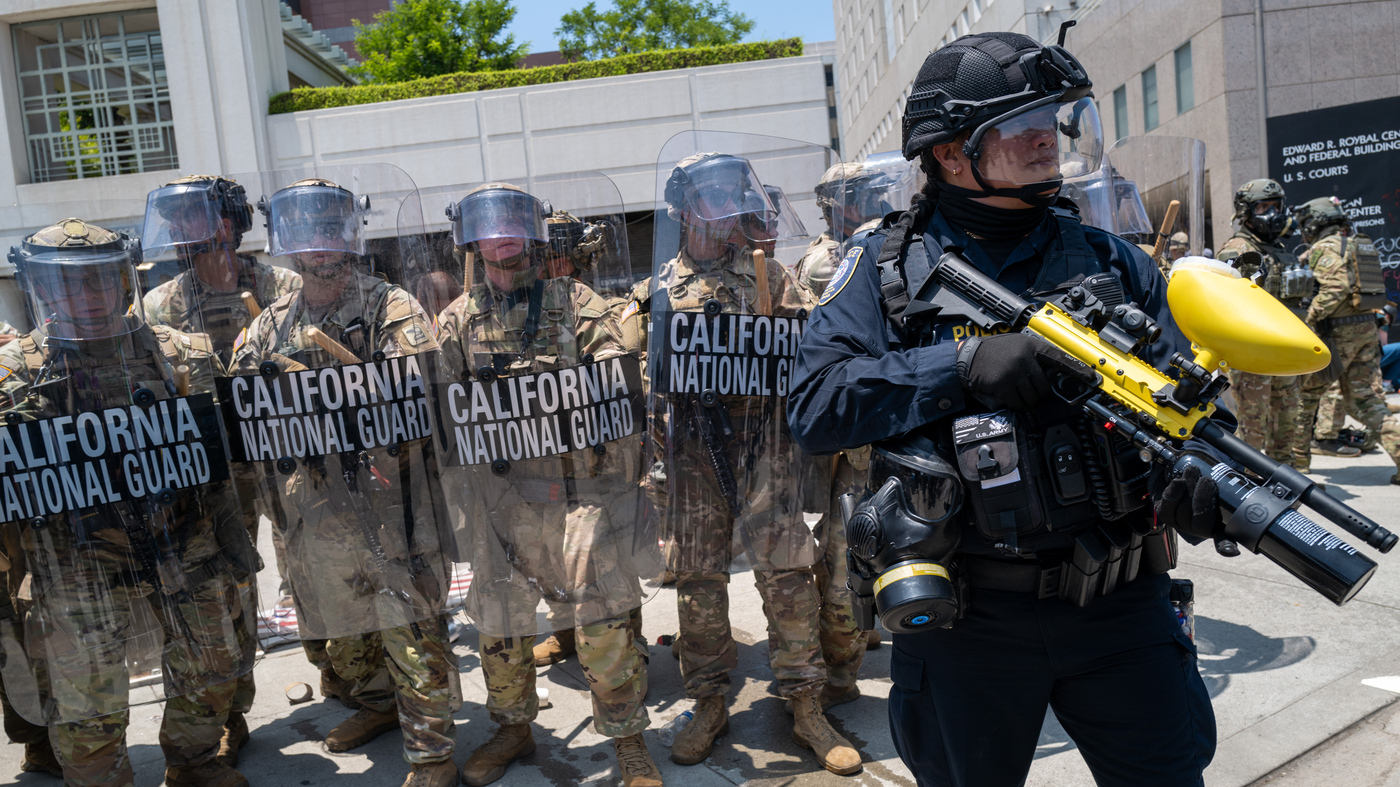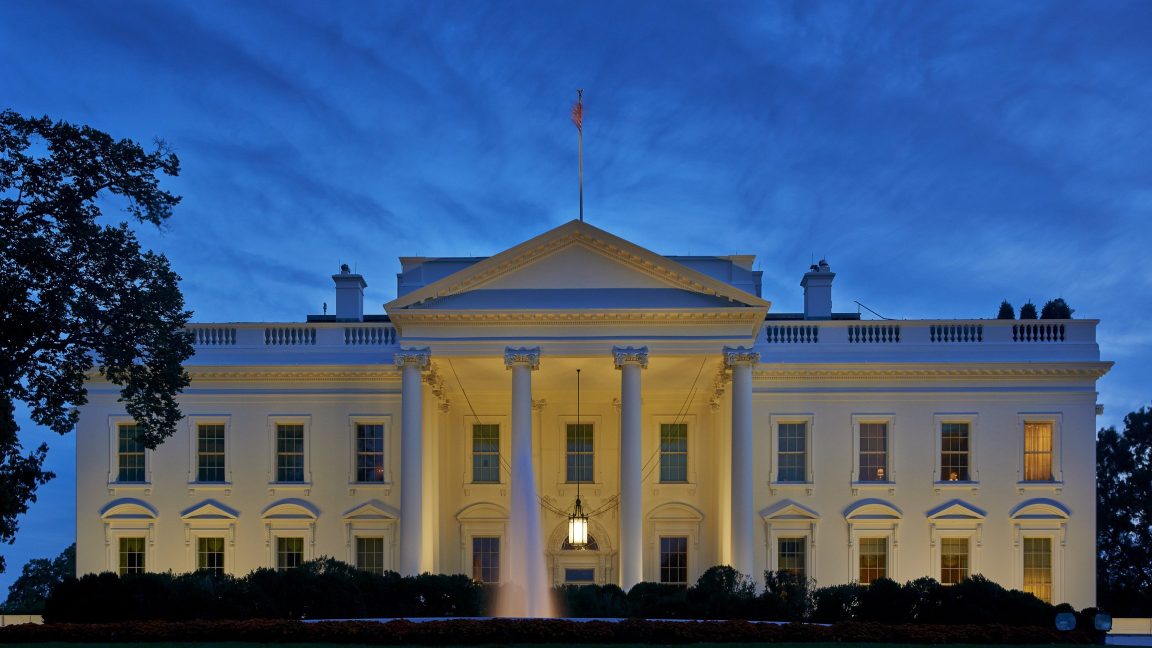

Police officers and National Guard soldiers stand outside a downtown jail in Los Angeles. Protests over federal immigration raids prompted the Trump administration to call in the National Guard against the wishes of city and state leaders.
Spencer Platt/Getty Images
hide caption
toggle caption
Spencer Platt/Getty Images

Police officers and National Guard soldiers stand outside a downtown jail in Los Angeles. Protests over federal immigration raids prompted the Trump administration to call in the National Guard against the wishes of city and state leaders.
Spencer Platt/Getty Images
The last time a President deployed the National Guard over a governor’s objections was more than 50 years ago.
Over the weekend, President Trump did just that — in California. He ordered 2,000 National Guard members to Los Angeles, where people are protesting federal immigration raids.
Today, Gov. Gavin Newsom said California is suing the Trump administration for what the governor called an unlawful action.
Trump called the protesters “insurrectionists”; Vice President JD Vance suggested they constituted an “invasion.” What does that signal about where the situation in California is headed? We ask Juliette Kayyem, a former assistant secretary of Homeland Security in the Obama administration.
For sponsor-free episodes of Consider This, sign up for Consider This+ via Apple Podcasts or at plus.npr.org.
Email us at considerthis@npr.org.
This episode was produced by Megan Lim and Connor Donevan. It was edited by Patrick Jarenwattananon. Our executive producer is Sami Yenigun.








